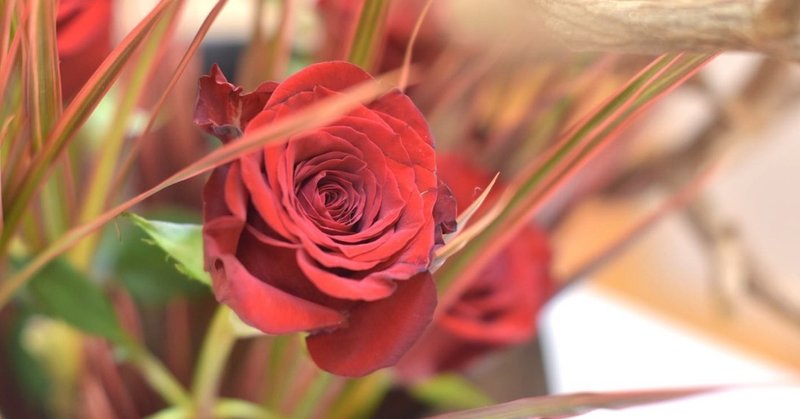
Wisdom of Ikebana: No Crossing, Even If You Do Not See It.
Given that it is one of the major Japanese cultural traditions, you may think that ikebana has many "rules" to follow. The truth is, while there are some principles you should value such as "letting your ego go to listen to the voice of flowers", only a small number of rules exist. At my IKERU lesson, I just explain two things as rules; one of which is "do not make flowers/branches cross each other".
You put a flower and then add another flower just in front of the flower you just put, which might make these two flowers look as if they lie upon each other. This is the obvious "crossing" you can actually see. These are two beautiful flowers, but by making them cross each other, the beauty of one is offset by that of the other. Each flower needs its own space to shine. No crossing, please, to let every flower look beautiful.
More subtle crossing is the one you cannot actually see from where you stand. Suppose, you put a flower behind a branch and you then think the flower would actually look more beautiful if its face comes before the branch. So you bring the flower's face by just changing the angle of the flower's stalk. The flower's stalk and the branch are crossing, but you will see it only when you look from the side.
In terms of where the flower's face should come, you did the right thing. And people would only look at the work from the front. So you may think this is OK. However, even if they do not see the crossing, people would "sense" there is something unrefined in your work. People can sense that the flow of your work is disrupted somewhere, even if they cannot visually see where the disruption occurs.
You need to pay attention not only to the surface, but the foot of your ikebana work; otherwise even if your work may look beautiful, it may not feel beautiful.
I have to tell you. Whenever I tell this rule to those who come to my IKERU lessons, I feel ashamed, as I know that I fail to put this into practice in my real life.
An example. As I offer a lesson at my living room, I do my best to clean the room before the lesson starts. There are pieces of amazing art work on the wall. So people may find the room indeed clean and beautiful. But the truth is, a room next to the living room becomes a messy walking closet, or more like the Pandora's box, and there are closets and shelves that have long waited to be cleaned and reorganized...so many crossings behind the doors that you do not see but certainly exist!
The room looks beautiful enough on the surface, but does not feel beautiful. I know I need to clean and organize behind the doors. And then, once cleaned, I need to be always careful to keep them clean and "no crossing".
This is far more difficult and challenging than creating ikebana work for an exhibition. The preparation for the exhibition usually takes only a few hours or one day at longest. I only have to be in the zone for the limited period of time. To apply the wisdoms of ikebana to my real life, on the other hand, I need to pay attention to what I do in every minute. But I believe, living a life that embodies the ikebana's wisdoms is worth a a lifelong try.
この記事が気に入ったらサポートをしてみませんか?
